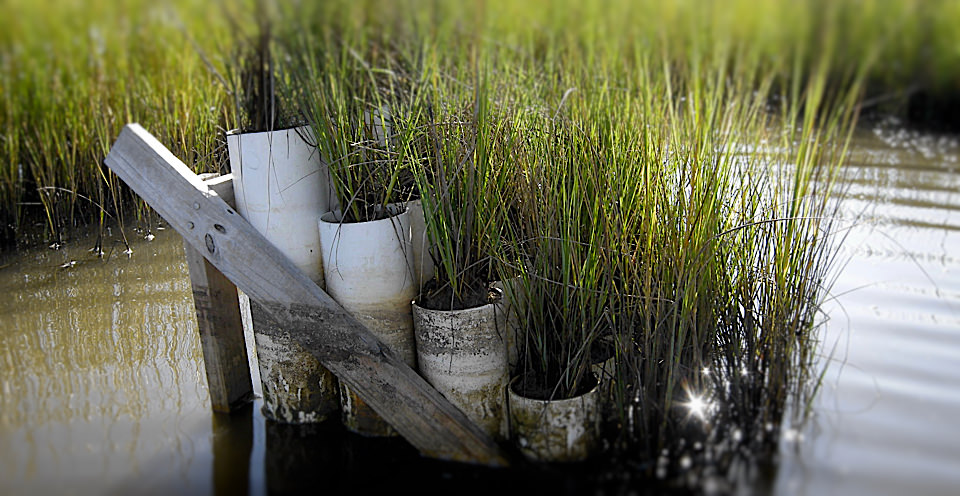What is a marsh organ?
The "marsh organ" is a simple instrument that helps scientists study sea level rise.

An installed marsh organ at the Apalachicola National Estuarine Research Reserve in the Florida Panhandle. A NOS-sponsored project in the Gulf of America employs the marsh organ to mimic sea level rise impacts on marsh vegetation and inform forecast models. Image courtesy of Jim Morris, University of South Carolina.
Scientists are always looking for ways to measure sea-level rise and its long-term effects on coastal processes. To that end, the University of South Carolina and NOAA’s National Centers for Coastal Ocean Science developed a simple device called a “marsh organ” (because its graduated “pipes” resemble those of an organ) to determine how well an estuary may respond to rising sea levels.
Setting up the marsh organ is a very muddy process. Scientists working to install the instrument may find themselves waist-deep in the soft marsh sediments! Once the organ is in place, they fill the tubes with mud and plant marsh grasses in each one. In a year or two, they return to the marsh organ to harvest the grass and measure how much it has grown.
Each “pipe” of the marsh organ represents a varying water-level "elevation.” As the tides ebb and flow, the marsh and the pipes are subject to rising and falling water levels. Depending on the amount of flooding and other factors, the marsh plants grow accordingly. The data is then used to inform a model that helps scientists forecast the future health of the marsh.